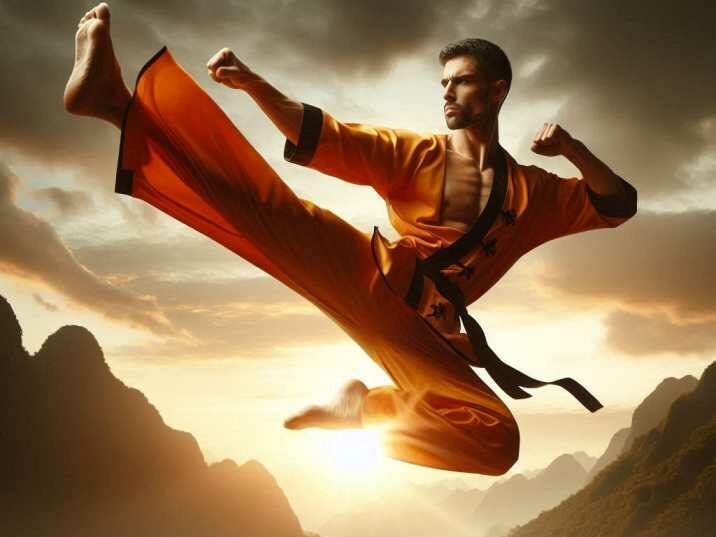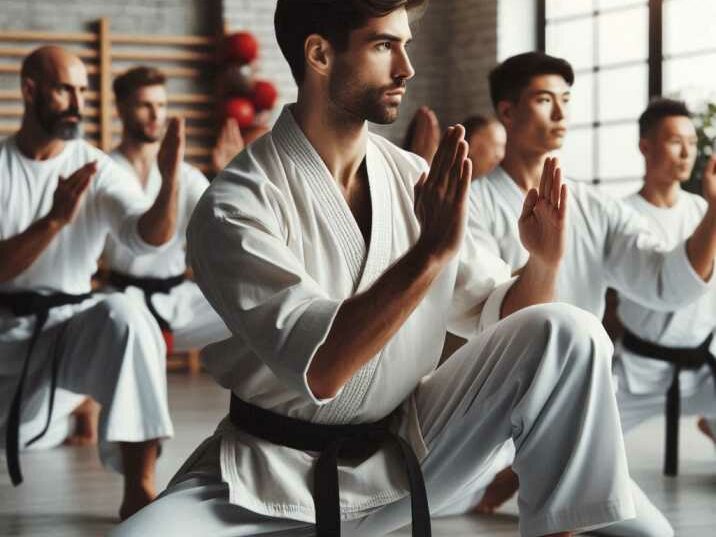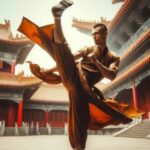Introduction
Table of Contents
Kung Fu, a traditional Chinese martial art, has captivated people worldwide with its impressive techniques, philosophy, and history. But is kung fu the deadliest martial art? This article will delve into the origins, styles, techniques, and real-world applications of Kung Fu to explore this question. By the end, you’ll have a comprehensive understanding of Kung Fu’s effectiveness and whether it deserves the title of the deadliest martial art.

What is Kung Fu?
Kung Fu is not just a single martial art but a term that refers to various Chinese martial arts. The term “Kung Fu” translates to “skill achieved through hard work.” Practitioners, known as martial artists, train diligently to perfect their techniques and improve both physically and mentally.
History of Kung Fu
Origins
Kung Fu’s origins can be traced back to ancient China, over 4,000 years ago. Early forms of Kung Fu were used for self-defense, hunting, and military training. Legends suggest that the Yellow Emperor, who ruled China around 2,600 BCE, was one of the first to practice and promote martial arts.
Evolution
As centuries passed, Kung Fu evolved and branched into various styles and schools. Influences from different regions and cultures were integrated, leading to a rich diversity of techniques and philosophies.
Styles of Kung Fu
Shaolin Kung Fu
Shaolin Kung Fu is perhaps the most well-known style, originating from the Shaolin Monastery in Henan Province. Monks developed this style to defend their temple and improve their health. Shaolin Kung Fu is characterized by its powerful, acrobatic moves, and deep stances.
Wing Chun
Wing Chun is a practical, close-range combat style that emphasizes efficiency and simplicity. It uses quick, straight-line strikes and tight defense to neutralize opponents. Wing Chun became globally popular thanks to Bruce Lee, who trained in this style.
Tai Chi
Tai Chi, often seen as a slow and graceful exercise, is also a martial art. Its gentle movements improve health and balance, but they also have self-defense applications. Tai Chi focuses on using an opponent’s force against them.
Other Styles
Other notable styles include Baguazhang (Eight Trigram Palm), known for its circular movements, and Hung Gar, famous for its powerful stances and strength training.
Techniques in Kung Fu
Striking
Kung Fu’s striking techniques include punches, kicks, elbow strikes, and knee strikes. Practitioners learn to generate maximum power with precision and speed. Different styles emphasize different types of strikes.
Grappling
Some Kung Fu styles incorporate grappling techniques such as throws, joint locks, and sweeps. These techniques allow practitioners to control or subdue opponents without causing serious harm.
Weapons
Kung Fu includes training with a variety of traditional weapons. Common weapons include the staff, sword, nunchaku, and spear. Weapon training improves coordination, strength, and understanding of combat principles.
Forms (Katas)
Kung Fu practitioners often train using forms, or katas. These are pre-arranged sequences of movements that simulate combat against multiple opponents. Forms help in practicing techniques, improving flexibility, and developing muscle memory.

Is Kung Fu Effective in Combat?
Self-Defense
Kung Fu is highly effective for self-defense. Its techniques are designed to neutralize threats quickly and efficiently. The training emphasizes awareness, quick reflexes, and strategic thinking, all of which are crucial in real-world self-defense situations.
Mixed Martial Arts (MMA)
In the world of MMA, some fighters have successfully integrated Kung Fu techniques into their training. While MMA predominantly features Brazilian Jiu-Jitsu, Muay Thai, and wrestling, the unique skills from Kung Fu can provide a competitive edge.
Real-World Applications
Kung Fu is not just for show or sport; it has practical applications in real-world scenarios. For example, law enforcement and military personnel can benefit from the discipline, strategic thinking, and physical fitness developed through Kung Fu training.
The Deadliest Martial Art?
Criteria for “Deadliest”
Determining the “deadliest” martial art involves considering various factors: effectiveness in combat, versatility, ability to cause harm, and adaptability to different situations.
Kung Fu vs. Other Martial Arts
While Kung Fu is undoubtedly powerful and versatile, other martial arts also have deadly techniques. For example, Brazilian Jiu-Jitsu excels in ground fighting and submissions, Muay Thai is known for its devastating strikes, and Krav Maga is designed for real-world self-defense situations.
Conclusion
Kung Fu is a formidable martial art with a rich history, diverse techniques, and practical applications. Whether it is the deadliest martial art is subjective and depends on individual perspectives and criteria. However, its emphasis on self-defense, discipline, and physical fitness makes it a powerful and respected martial art.
Table of Information about Is Kung Fu the Deadliest Martial Art?
| Aspect | Details |
|---|---|
| Origin | Ancient China, over 4,000 years ago |
| Styles | Shaolin, Wing Chun, Tai Chi, and more |
| Techniques | Striking, Grappling, Weapons |
| Forms | Pre-arranged sequences of movements (katas) |
| Effectiveness | High in self-defense and real-world applications |
| Comparison | Competes with other martial arts like BJJ, Muay Thai |
FAQs
What is the main focus of Kung Fu?
Kung Fu focuses on self-defense, discipline, and physical fitness.
Can Kung Fu be used in real-world self-defense?
Yes, Kung Fu techniques are practical and effective for self-defense.
Is Kung Fu the same as Karate?
No, Kung Fu and Karate are different martial arts with distinct techniques and philosophies.
Do Kung Fu practitioners use weapons?
Yes, Kung Fu includes training with various weapons such as swords and staffs.
Is Kung Fu suitable for children?
Yes, Kung Fu is suitable for children and helps in developing discipline and physical fitness.


